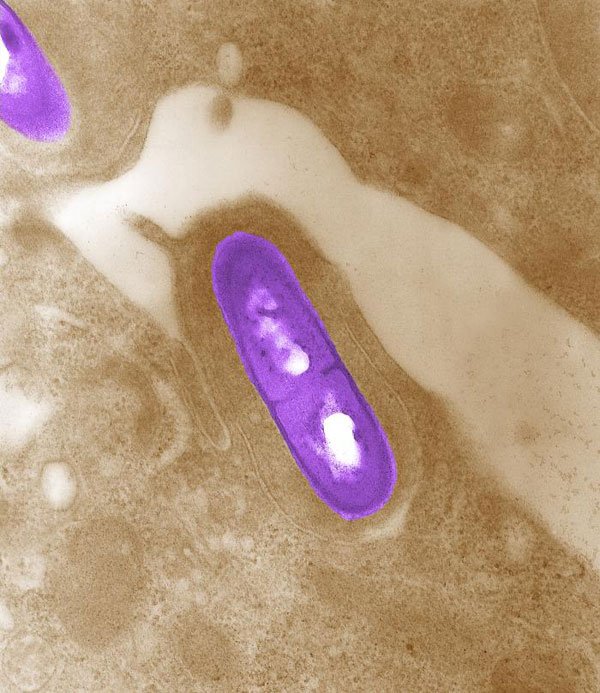More Deaths Expected in Cantaloupe-Related Listeria Outbreak: CDC

The death toll from listeriosis infections linked to contaminated cantaloupes is expected to rise in the coming weeks, the Centers for Disease Control and Prevention (CDC) announced today.
So far, the outbreak has sickened 72 people and killed at least 13, the CDC said.
"This is the deadliest outbreak of a foodborne disease that we've identified in more than a decade," Dr. Thomas Frieden, director of the CDC, said at a news conference today.
Here's what you need to know about the new outbreak:
Why is the death toll likely to rise?
The CDC is still investigating additional deaths that are suspected to be linked to the outbreak. (Laboratory tests must be done to confirm the presence of the bacteria before a death can be officially attributed to the outbreak.)
Listeria is unusual in that the time between when you eat contaminated food and the time you get sick can be quite a while — weeks, or even months, Frieden said.
Sign up for the Live Science daily newsletter now
Get the world’s most fascinating discoveries delivered straight to your inbox.
Because of this, "We do anticipate that there will be a rising number of cases in the days and weeks to come," Frieden said.
Why is this outbreak so deadly?
Listeriosis is caused by the bacteria Listeria monocytogenes, which are found in soil and water.
A healthy adult infected with these bacteria would probably not become ill, said James Dickson, a food safety expert and professor in the Department of Animal Science at Iowa State University. However, people who are particularly susceptible to the disease — including pregnant women, newborns, older adults and people with compromised immune systems — can be stricken with serious illness, Dickson said.
In this outbreak, most of the people infected are over 60 or have weakened immune systems, and that may be the reason for the high death toll, Dickson said.
How many people have died?
Thirteen deaths that have been officially confirmed: two occurred in Colorado, one in Kansas, one in Maryland, one in Missouri, one in Nebraska, four in New Mexico, one in Oklahoma and two in Texas, according to the CDC.
What is it about cantaloupe that makes it a haven for bacteria?
There have been 10 foodborne illness outbreaks linked to cantaloupes in the last decade, Frieden said. Seven of these involved salmonella. In March this year, an outbreak of salmonella from cantaloupe sickened 20, but caused no deaths.
This is the first outbreak of listeria associated with cantaloupe, the CDC said.
Cantaloupes have a rough surface that can trap bacteria, Dickson said. In addition, like other kinds of produce, cantaloupes are usually consumed raw. How many people usually die from listeria every year?
About 1,600 people become seriously sick with listeriosis every year, and about 260 die, the CDC says. L. monocytogenes is the third-deadliest foodborne illness in the United States, behind salmonella (380 deaths per year) and Toxoplasma gondii (330 deaths per year).
An outbreak of listeria in 2002 linked to deli meat sickened 54 and killed 8.
What are the symptoms and signs of a listeria infection?
Symptoms of listeriosis in high-risk people can include fever, muscle aches, headache, stiff neck, confusion, loss of balance and convulsions, the CDC says.
Symptoms in healthy people who are exposed to large doses of the bacteria can include diarrhea and fever.
How can I avoid getting listeria?
If you have Rocky Ford cantaloupes from Jensen Farms, the farm suspected as the source of the outbreak, or you are in doubt about where your cantaloupes are from, you should throw them out, Frieden said.
To reduce your risk of infection with L. monocytogenes, the CDC has the following advice:
- Eat perishable and ready-to-eat foods as soon as possible.
- Rinse raw vegetables thoroughly before eating.
- Do not drink unpasteurized milk.
- Heat ready-to-eat foods and leftovers until they are steaming hot.
- Those at risk for infection should not eat hot dogs, luncheon meats, cold cuts or other deli meats unless they are heated to an internal temperature of 165°F, or until steaming hot, before serving.
Pass it on: An outbreak of listeriosis linked to contaminated cantaloupes is the deadliest outbreak of foodborne illness in a decade.
This story was provided by MyHealthNewsDaily, a sister site to LiveScience. Follow MyHealthNewsDaily staff writer Rachael Rettner on Twitter @RachaelRettner. Find us on Facebook.

Rachael is a Live Science contributor, and was a former channel editor and senior writer for Live Science between 2010 and 2022. She has a master's degree in journalism from New York University's Science, Health and Environmental Reporting Program. She also holds a B.S. in molecular biology and an M.S. in biology from the University of California, San Diego. Her work has appeared in Scienceline, The Washington Post and Scientific American.










